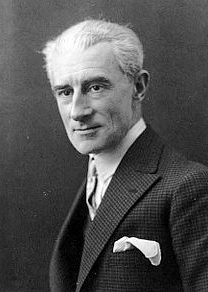Composer | Maurice Ravel

France’s most acclaimed 20th century composer was born in Ciboure (in the French Basque province adjoining Spain) on 7 March 1875 to a Swiss father and Basque mother, but grew up in Paris, where he studied music at the Conservatoire under Fauré and was influenced by Debussy’s Impressionism. His diverse interests extended to American Jazz, African, and traditional folk music—and especially Spain, for which country’s music he developed a particular affection and affinity. Ravel enjoyed an equal talent for piano and orchestral composition.
The first decade of the 20th Century saw his String Quartet (1903), Introduction and Allegro for Piano, Harp and Flute (1905), Rhapsodie Espagnole (1907), the opera L’Heure Espagnole (1907) and the admired piano works Jeux d’Eau (1901), Miroirs and Sonatine (1905). The following decade saw his career blossom, with a major Diaghilev/Fokine ballet Daphnis et Chloé (1912), Mother Goose (1912) and important piano works Valses nobles et sentimentales (1911) and Le tombeau de Couperin (1917), which predated Stravinsky’s neoclassical innovations.
Ravel continued to work successfully throughout the 1920s, developing his interest in the waltz form, neoclassicism, Spanish and jazz music, with works including La Valse (1920), Bolero (1928), the opera L’enfant et les sortilèges (1925), and his milestone Piano Concerti for Left Hand (1930) and Piano Concerto in G (1931). He also made a superb orchestration of Mussorgsky’s Pictures at an Exhibition (1922). In 1928 Ravel made a wildly successful American tour of 25 cities, famously refusing Gershwin’s request to study under him: “Why be a second-rate Ravel when you can be a first-rate Gershwin?”